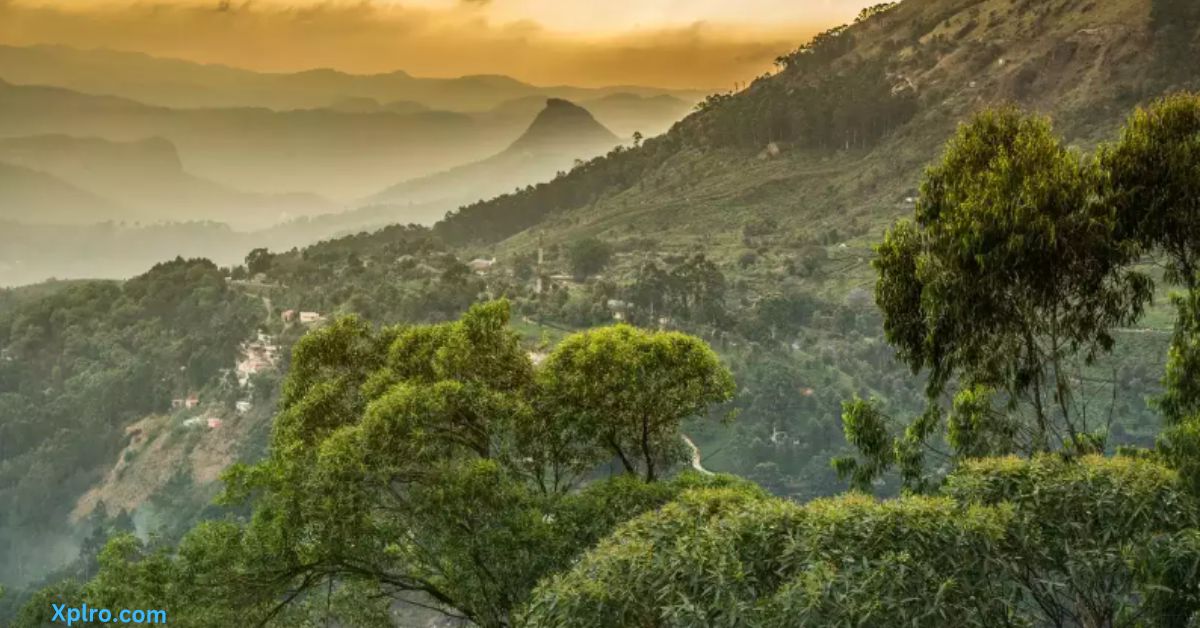From lush forests and serene backwaters to majestic mountains and pristine beaches, eco-tourism in India offers travelers the chance to connect with nature and support sustainable travel practices. India is a land of diverse landscapes and rich biodiversity, making it a perfect destination for eco-tourism. In this comprehensive guide, we’ll take you on a journey through some of the best eco-tourism destinations in India. Each place is a true gem that showcases the country’s natural beauty and commitment to conservation. Dive into this exploration with Xplro.com and discover the best spots for eco-tourism in India.
- The Tranquil Backwaters of Kerala
- The Pristine Beaches of Andaman and Nicobar Islands
- The Rich Biodiversity of Jim Corbett National Park, Uttarakhand
- The Serene Beauty of Sunderbans, West Bengal
- The Majestic Himalayas
- The Wilderness of Kaziranga National Park, Assam
- The Enchanting Western Ghats
- The Desert Oasis of Thar Desert, Rajasthan
- The Sacred Ghats of Varanasi, Uttar Pradesh
- Conclusion
- FAQs
The Tranquil Backwaters of Kerala
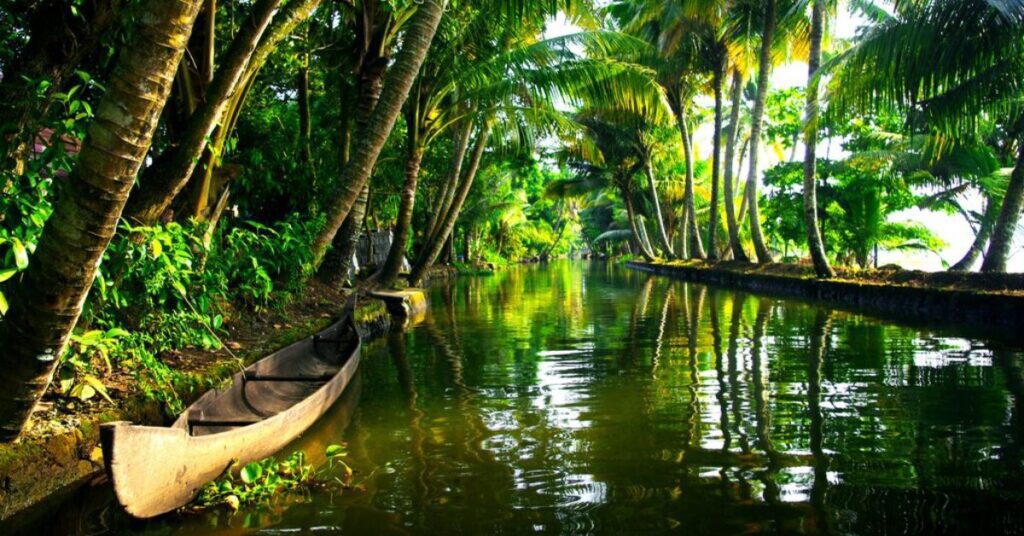
Kerala’s backwaters are like a slow, calming river ride through a postcard. Crystal-clear water winds between vibrant green lands, with swaying palm trees lining the shores. You can explore on a small boat or a cozy houseboat, taking in the scenery at your own pace. It’s a world away from the rush of everyday life.
These waterways are bursting with life! Birds sing in the trees, and you might spot some interesting animals along the way. It’s a perfect place for anyone who loves nature and wants to escape the busy world for a while.
- Activities for Eco-tourism in India: Houseboat cruises, bird watching, village tours.
- Wildlife: Kingfishers, otters, and numerous fish species.
- Best Time to Visit: October to March
- Extra Detail: Staying on a traditional houseboat made from eco-friendly materials provides a unique way to experience the backwaters while minimizing your environmental footprint.
The Pristine Beaches of Andaman and Nicobar Islands
Crystal-clear waters lap at sugary-white sand – that’s the dream come true on the beaches of Andaman and Nicobar! Tucked away in the Bay of Bengal, these island chains boast some of the most stunning beaches on Earth. Powdery sand, turquoise water, and colorful reefs teeming with life – each beach offers a unique slice of paradise.
Want to watch fiery sunsets paint the sky? Head to Radhanagar Beach on Havelock Island, known for its peaceful vibes. Craving a secluded escape? Long Island’s Lalaji Bay awaits! No matter your pick, you’re guaranteed a tranquil escape from the daily grind.
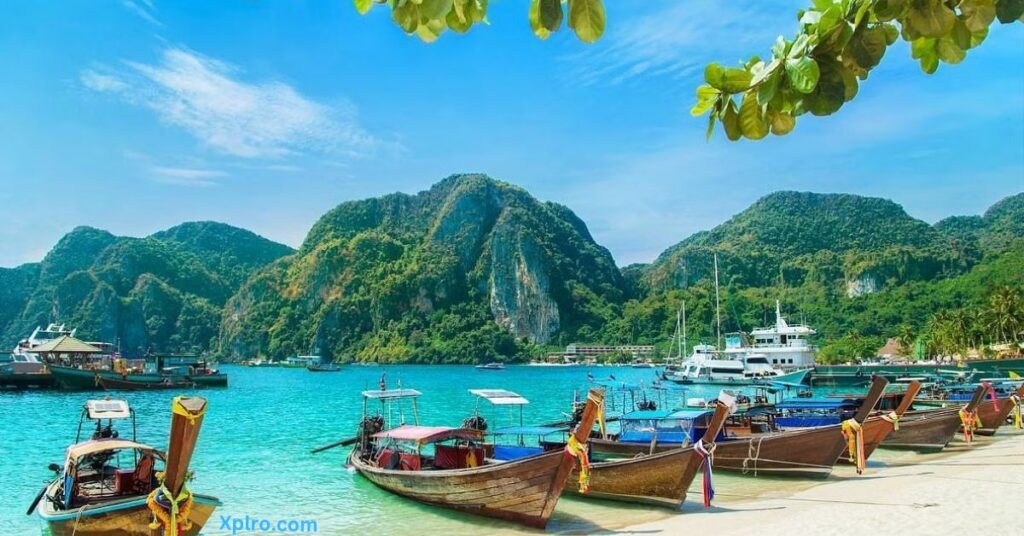
- Activities for Eco-tourism in India: Snorkeling, scuba diving, beachcombing.
- Wildlife: Sea turtles, dolphins, and colorful fish.
- Best Time to Visit: November to April
- Extra Detail: Many resorts on these islands follow eco-friendly practices, such as using solar power and promoting marine conservation.
The Rich Biodiversity of Jim Corbett National Park, Uttarakhand

Nestled in the foothills of the Himalayas, Jim Corbett National Park is a crown jewel of Uttarakhand, teeming with diverse wildlife. Established in 1936, it’s India’s oldest national park, named after Jim Corbett, a legend who went from hunting tigers to protecting them.
Spanning over 500 square kilometers, the park boasts a rich tapestry of landscapes – dense jungles teeming with life, open grasslands perfect for grazing, and refreshing rivers snaking through the terrain. This variety provides a haven for a mind-boggling array of animals.
- Activities for Eco-tourism in India: Wildlife safaris, bird watching, nature walks.
- Wildlife: Tigers, elephants, leopards, and over 600 bird species.
- Best Time to Visit: November to June
- Extra Detail: Staying in eco-friendly lodges within the park allows you to experience the wildlife up close while supporting conservation efforts.
The Serene Beauty of Sunderbans, West Bengal
The amazing Sunderbans in West Bengal! This place is a mesmerizing mix of wild forests, snaking rivers, and incredible animals. It’s a UNESCO World Heritage Site, and for good reason! The Sunderbans are part of a huge delta where three mighty rivers – the Ganges, Brahmaputra, and Meghna – meet and flow into the sea.
What makes the Sunderbans special are the thick mangrove forests. These are unlike any trees you’ve seen before, with roots that twist and turn underwater. They create a peaceful, almost secret world with hidden pathways and waterways. But be careful, because this hidden paradise is also home to the famous Royal Bengal tiger!
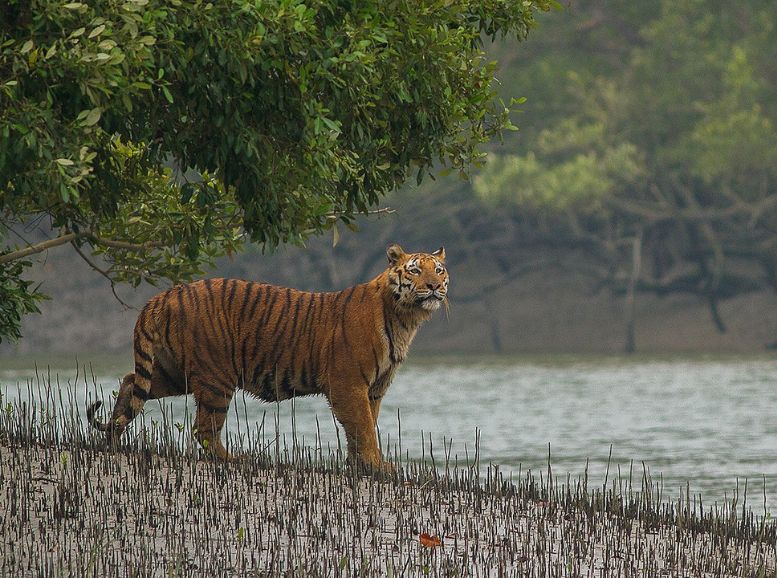
- Activities for Eco-tourism in India: Boat safaris, bird watching, village visits.
- Wildlife: Royal Bengal tigers, crocodiles, and numerous bird species.
- Best Time to Visit: October to March
- Extra Detail: Eco-tourism initiatives in the Sunderbans focus on community-based tourism, providing sustainable livelihoods for local residents.
The Majestic Himalayas

Imagine a massive crown of snow-capped mountains stretching across five countries. That’s the Himalayas, Earth’s highest mountain range! These giants, with Mount Everest as the tallest peak, create a jaw-dropping scene. Towering mountains, peaceful valleys, and a hidden world of plants and animals await.
Hikers, climbers, and adventure seekers love the challenge of conquering the Himalayas. But these mountains hold a deeper meaning too. Many cultures consider them sacred, with holy sites and monasteries tucked away in hidden valleys. The Himalayas are also a vital spot for nature, protecting rare creatures like the snow leopard and the red panda.
Ladakh
High up in northern India lies Ladakh, nicknamed “The Land of High Passes” for a reason! This stunning region is famous for its dramatic landscapes, fascinating culture, and ancient traditions. Nestled between the mighty Himalayas and the Karakoram Range, Ladakh boasts a unique beauty. Imagine vast, empty mountains painted in shades of brown, sparkling blue lakes reflecting the sky, and ancient monasteries clinging to rocky cliffs.
Adventure seekers flock to Ladakh for its thrilling activities. Hike through breathtaking scenery, challenge yourself with a mountain climb, or take a wild ride whitewater rafting down a river.
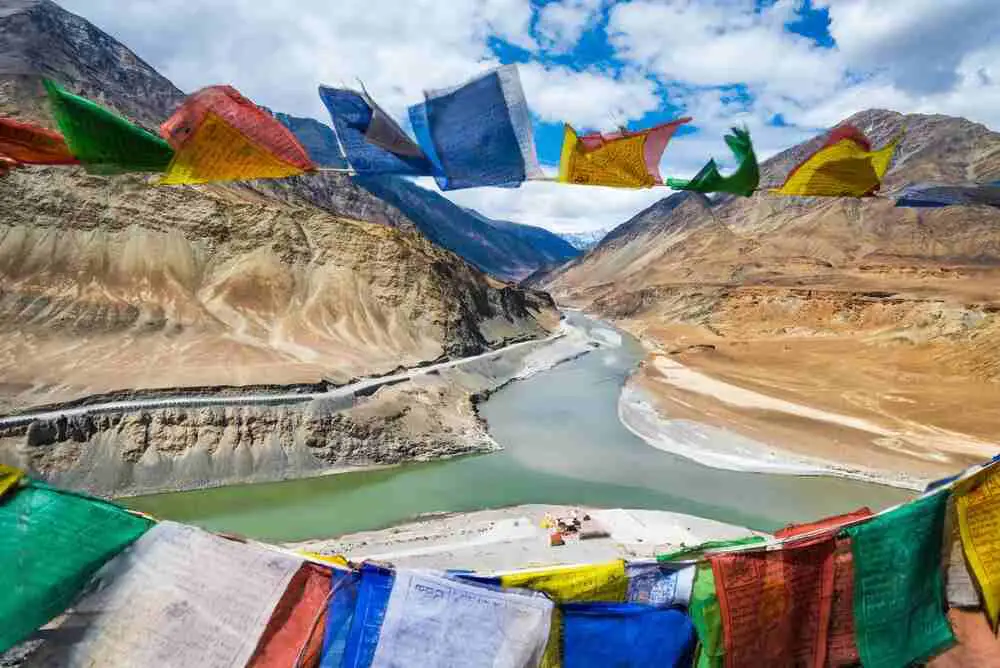
- Activities for Eco-tourism in India: Trekking, mountain biking, wildlife spotting.
- Wildlife: Snow leopards, ibex, and Himalayan marmots.
- Best Time to Visit for Eco-tourism in India: May to September
- Extra Detail: Community-based homestays in Ladakh offer a unique cultural experience while supporting local economies and conservation efforts.
Sikkim

Sikkim, a tiny gem in northeastern India, shines with untouched beauty, deep history, and peaceful vibes. Nestled in the Himalayas, this state packs a scenic punch: lush valleys, cascading waterfalls, and snow-capped peaks like Kanchenjunga, the world’s third tallest, dominate the landscape. Nature lovers will find diverse plants and animals, while colorful prayer flags fluttering around peaceful monasteries like Rumtek, Pemayangtse, and Enchey hint at Sikkim’s rich Buddhist traditions and history.
- Activities for Eco-tourism in India: Trekking, bird watching, cultural tours.
- Wildlife: Red pandas, Himalayan black bears, and a variety of bird species.
- Best Time to Visit: March to June and September to December
- Extra Detail: Sikkim’s eco-tourism initiatives include promoting organic farming and conservation of its rich biodiversity.
The Wilderness of Kaziranga National Park, Assam
Calling all animal lovers! Kaziranga National Park in India is a UNESCO World Heritage Site teeming with wildlife. It’s famous for its one-horned rhinos, the world’s largest population of these endangered creatures that roam freely across the vast grasslands.
But Kaziranga is more than just rhinos. Dense jungles, tall grassy plains, and winding rivers create a perfect habitat for a whole menagerie of animals. Imagine spotting wrinkly-skinned elephants, tigers with bright orange stripes, and even water buffaloes cooling off in the rivers.
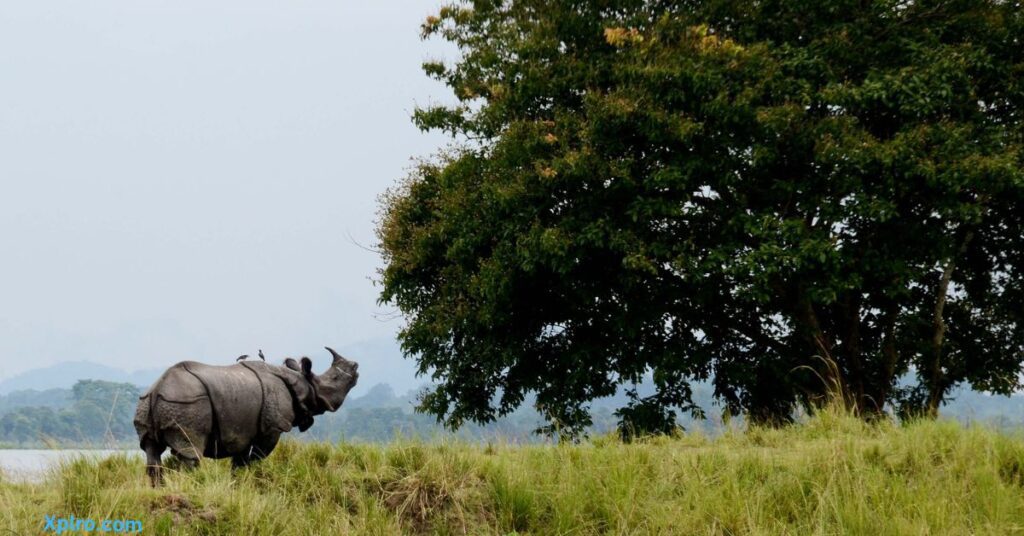
- Activities for Eco-tourism in India: Jeep safaris, elephant safaris, bird watching.
- Wildlife: One-horned rhinoceroses, tigers, elephants, and numerous bird species.
- Best Time to Visit for Eco-tourism in India: November to April
- Extra Detail: The park’s conservation efforts have been instrumental in increasing the population of the endangered one-horned rhinoceros.
The Enchanting Western Ghats
Ever imagine a mountain range dripping with life? That’s the Western Ghats, a UNESCO World Heritage Site hugging India’s west coast. Lush forests carpet the slopes, mist dances around the peaks, and a mind-boggling variety of plants and animals call it home. Stretching across six states, these mountains are a nature lover’s paradise.
Imagine exploring dense jungles teeming with life, rolling green hills perfect for picnics, and hidden waterfalls cascading down cliffs. The Western Ghats are special because they’re home to unique creatures like the Nilgiri tahr, a kind of mountain goat, and the playful lion-tailed macaque monkey. Birdwatchers come from all over to see the incredible feathered variety.
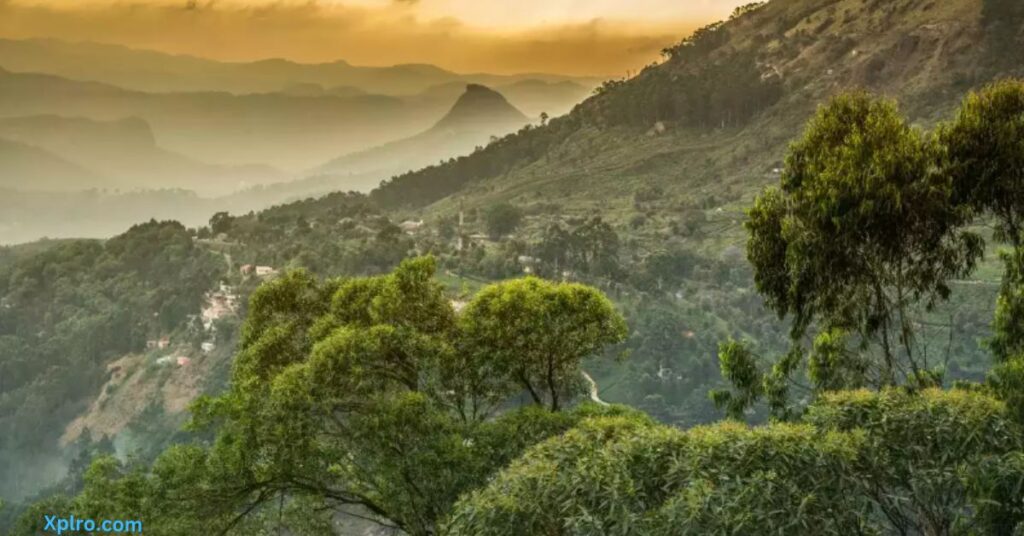
Silent Valley National Park, Kerala
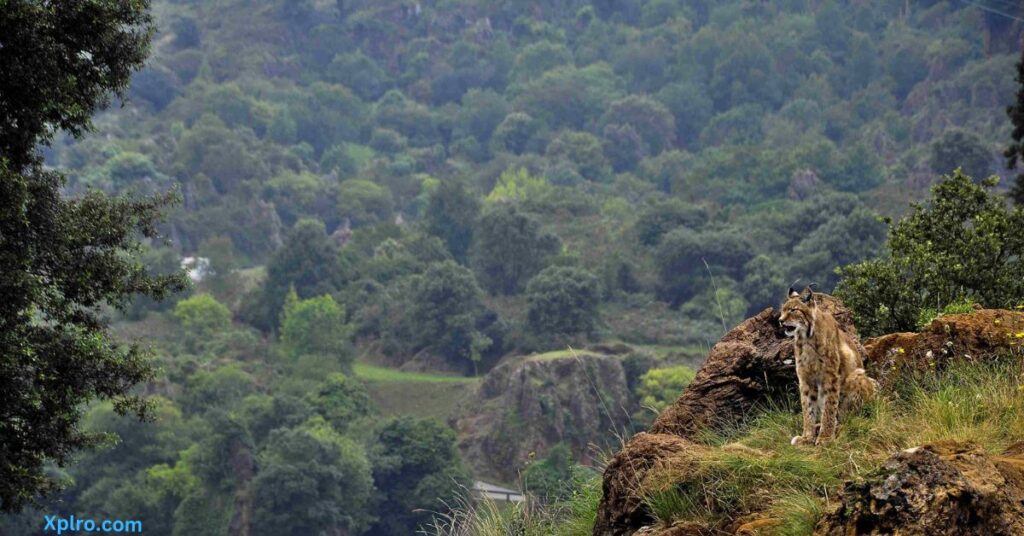
Deep within Kerala’s Nilgiri Hills lies a secret world: Silent Valley National Park. This emerald rainforest is one of India’s last untouched treasures, a place where towering trees create a cool, green canopy overhead. Sparkling rivers wind through the dense foliage, and the air hums with the music of unseen creatures.
Silent Valley is a haven for rare and wonderful animals. Swinging through the branches might be lion-tailed macaques with their impressive tails. Giant Malabar squirrels, the biggest squirrels in India, scamper along the forest floor. And high up in the mountains, you might even spot a shy Nilgiri tahr, a type of wild goat.
- Activities for Eco-tourism in India: Nature walks, bird watching, wildlife spotting.
- Wildlife: Lion-tailed macaques, Malabar giant squirrels, and numerous bird species.
- Best Time to Visit for Eco-tourism in India: December to April
- Extra Detail: The park’s commitment to conservation and minimal human interference ensures the preservation of its unique biodiversity.
Coorg, Karnataka
Coorg, a captivating hill station nestled in Karnataka’s Western Ghats, is a tapestry of rolling green hills, swirling mists, and vibrant coffee estates. This serene escape, also known as Kodagu, offers a perfect blend of nature’s beauty with cultural immersion through festivals and local cuisine. Explore aromatic coffee plantations, trek to hidden waterfalls, or get your adrenaline pumping with rafting and wildlife spotting in Nagarhole National Park. Coorg’s cool climate and tranquil atmosphere make it an ideal retreat for relaxation, offering a taste of Karnataka’s cultural richness amidst the embrace of nature.
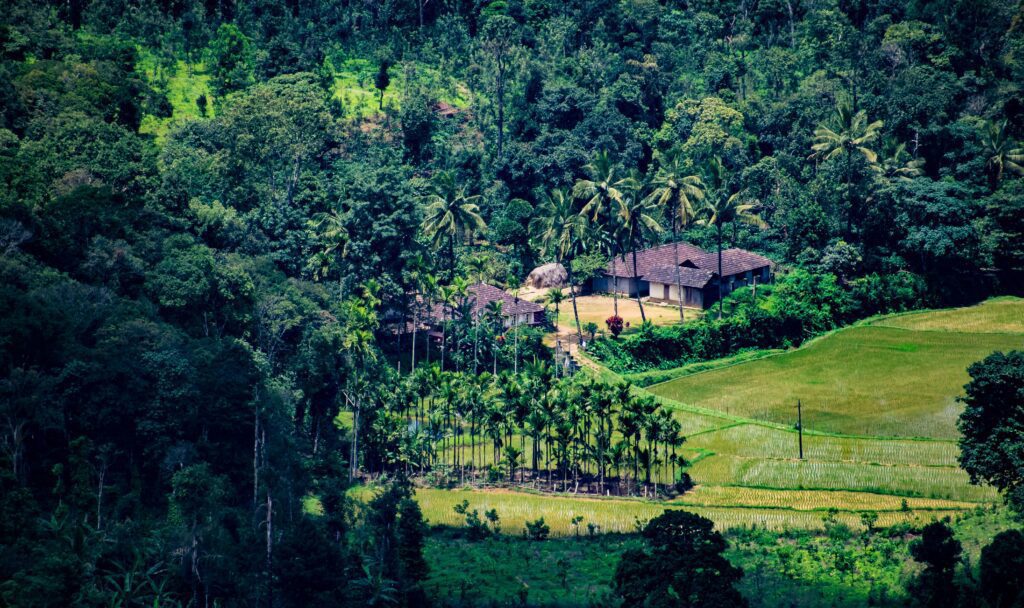
- Activities: Coffee plantation tours, trekking, bird watching.
- Wildlife: Elephants, leopards, and a variety of bird species.
- Best Time to Visit for Eco-tourism in India: October to March
- Extra Detail: Many homestays and resorts in Coorg follow eco-friendly practices, such as rainwater harvesting and organic farming.
The Desert Oasis of Thar Desert, Rajasthan

Rajasthan’s Thar Desert isn’t your typical desert. Imagine a land of stark contrasts – vast, empty stretches of sand dunes whispering secrets in the wind, suddenly giving way to vibrant pockets of life. India’s largest desert stretches across Rajasthan, with parts spilling into Gujarat and Punjab. Nicknamed the “Great Indian Desert,” the Thar is a mesmerizing place. Golden dunes roll as far as the eye can see, creating a landscape unlike any other.
But the Thar Desert is more than just emptiness. Scattered throughout are hidden gems like Jaisalmer, a city that shimmers like a mirage in the desert heat. Imagine intricately carved houses called havelis, whispering stories of the past, and the majestic Jaisalmer Fort, standing proudly like a desert sentinel.
Jaisalmer
Jaisalmer, Rajasthan’s “Golden City,” lives up to its name. Imagine a city bathed in the warm glow of the desert sun, its buildings constructed from golden sandstone that shimmers like a mirage. Steeped in history, Jaisalmer is a visual treat. The mighty Jaisalmer Fort, a UNESCO World Heritage Site, stands tall and proud, overlooking the city. Everywhere you look, intricate mansions called havelis line the streets, each one a testament to skilled craftsmanship and a bygone era.
But Jaisalmer offers more than just stunning architecture. Delve into the vibrant markets, a sensory overload of colorful textiles, unique handicrafts made by local artisans, and sparkling jewelry that catches the light. For a true desert experience, embark on a camel safari across the vast sand dunes of the Thar Desert.
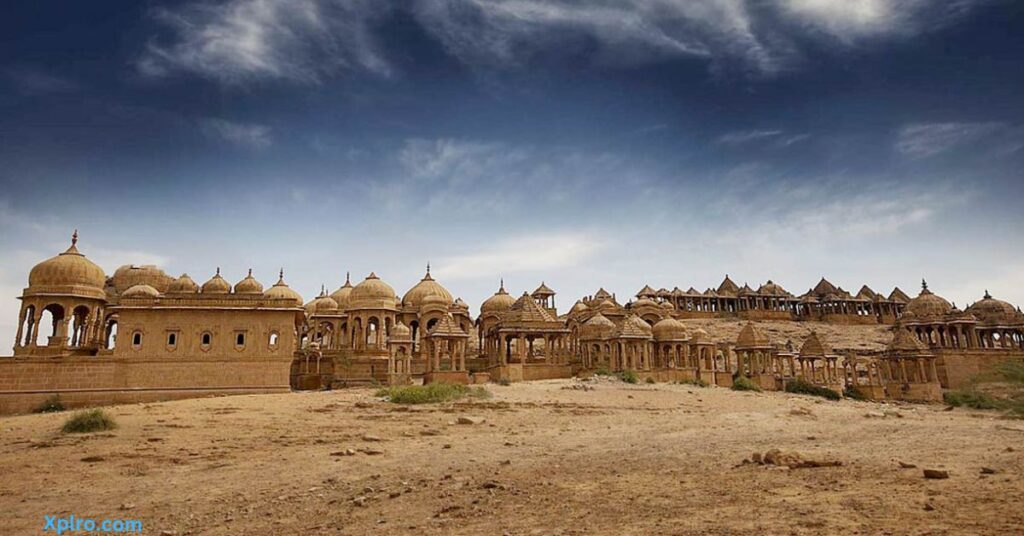
- Activities: Camel safaris, cultural tours, desert camping.
- Wildlife: Desert foxes, blackbucks, and a variety of bird species.
- Best Time to Visit for Eco-tourism in India: October to March
- Extra Detail: Desert camps in Jaisalmer often use solar energy and follow sustainable practices to minimize their environmental impact.
The Sacred Ghats of Varanasi, Uttar Pradesh
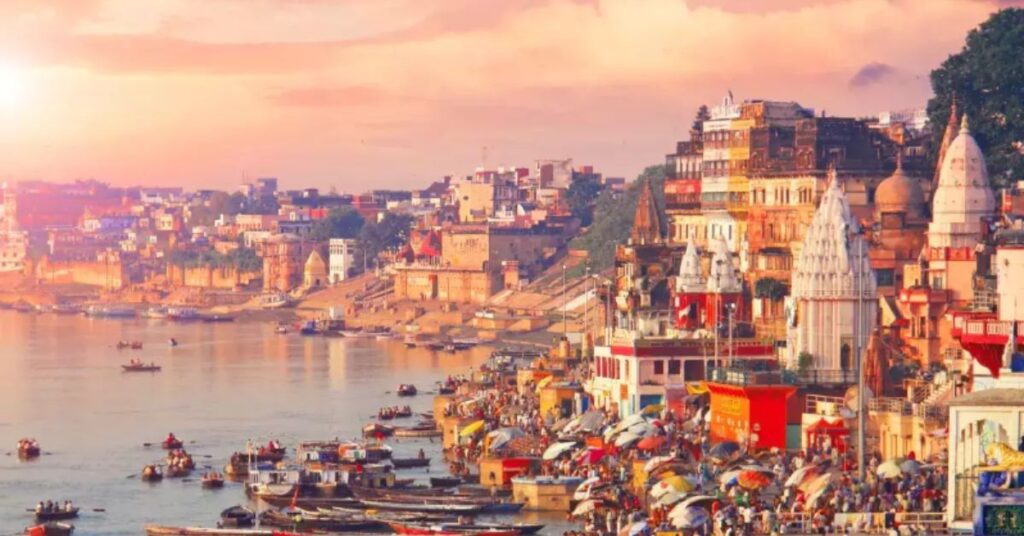
Varanasi, nestled on the banks of the holy Ganges in Uttar Pradesh, isn’t just one of the oldest continuously inhabited cities on Earth, it’s a spiritual heartbeat of India. Here, the iconic Ghats – giant stairways leading down to the river – are where ancient traditions and deep devotion thrum with life.
For Hindus, Varanasi is a sacred pilgrimage, a chance for spiritual awakening. The Ghats are a vibrant tapestry of activity. Devotees whisper prayers or erupt in rhythmic chants, their voices echoing across the water. Some immerse themselves in the Ganges, its waters believed to cleanse the soul.
- Activities: Boat rides, cultural tours, spiritual experiences.
- Wildlife: Ganges dolphins, various fish species, and birds.
- Best Time to Visit for Eco-tourism in India: October to March
- Extra Detail: Efforts are being made to clean the Ganges and promote eco-friendly tourism practices in Varanasi, ensuring the preservation of its sacred river.
Conclusion
As you’ve seen, India offers an incredible diversity of eco-tourism destinations, each one more captivating than the last. Whether you’re seeking to immerse yourself in the natural beauty, support conservation efforts, or simply enjoy sustainable travel, these destinations for eco-tourism in India are sure to leave a lasting impression. So pack your bags, and get ready to embark on an eco-friendly adventure with Xplro.com, exploring the best places for eco-tourism in India that highlight the country’s commitment to preserving its natural heritage!
FAQs
What defines eco-tourism?
- Eco-tourism promotes responsible travel to natural areas that preserve the environment and benefit local communities.
Why is eco-tourism Eco-tourism in India is significant?
- India’s diverse ecosystems and wildlife make sustainable tourism crucial for conserving habitats and supporting local livelihoods.
Which are India’s top eco-tourism destinations?
- Prime eco-tourism spots in India include the Western Ghats, Kaziranga National Park, Andaman and Nicobar Islands, and Ladakh.
How can travelers practice eco-tourism in India?
- Opt for eco-friendly accommodations and tour operators, reduce waste, respect local cultures, and support conservation efforts.
What activities are available during eco-tourism in India?
- Enjoy wildlife safaris, nature walks, birdwatching, sustainable trekking, visits to organic farms, and community-based tourism experiences.
Are there eco-conscious accommodations in India?
- Yes, many eco-lodges, resorts, and homestays in India utilize sustainable practices like rainwater harvesting and solar energy.
How does eco-tourism benefit local communities?
- Eco-tourism in India creates jobs, preserves traditions, promotes local crafts and cuisine, and empowers communities to protect their natural heritage.
What challenges does eco-tourism in India face?
- Challenges include balancing tourism growth with conservation, ensuring fair benefits for communities, and managing impacts on fragile ecosystems.
How can visitors responsibly explore national parks and sanctuaries?
- Respect wildlife and habitats, follow designated trails, minimize plastic use, and support conservation initiatives during visits.
What eco-friendly transportation options are available in India?
- Choose trains or buses over flights, use eco-friendly vehicles for local travel, and consider cycling or walking tours to reduce environmental impact.
How can travelers contribute to conservation efforts during eco-tourism in India trips?
- Volunteer, donate to local conservation groups, raise awareness about sustainability, and practice responsible tourism behaviors.
Is eco-tourism in India suitable for solo travelers?
- Yes, solo travelers can connect with nature, explore diverse cultures, and contribute positively to conservation efforts through eco-tourism activities.


